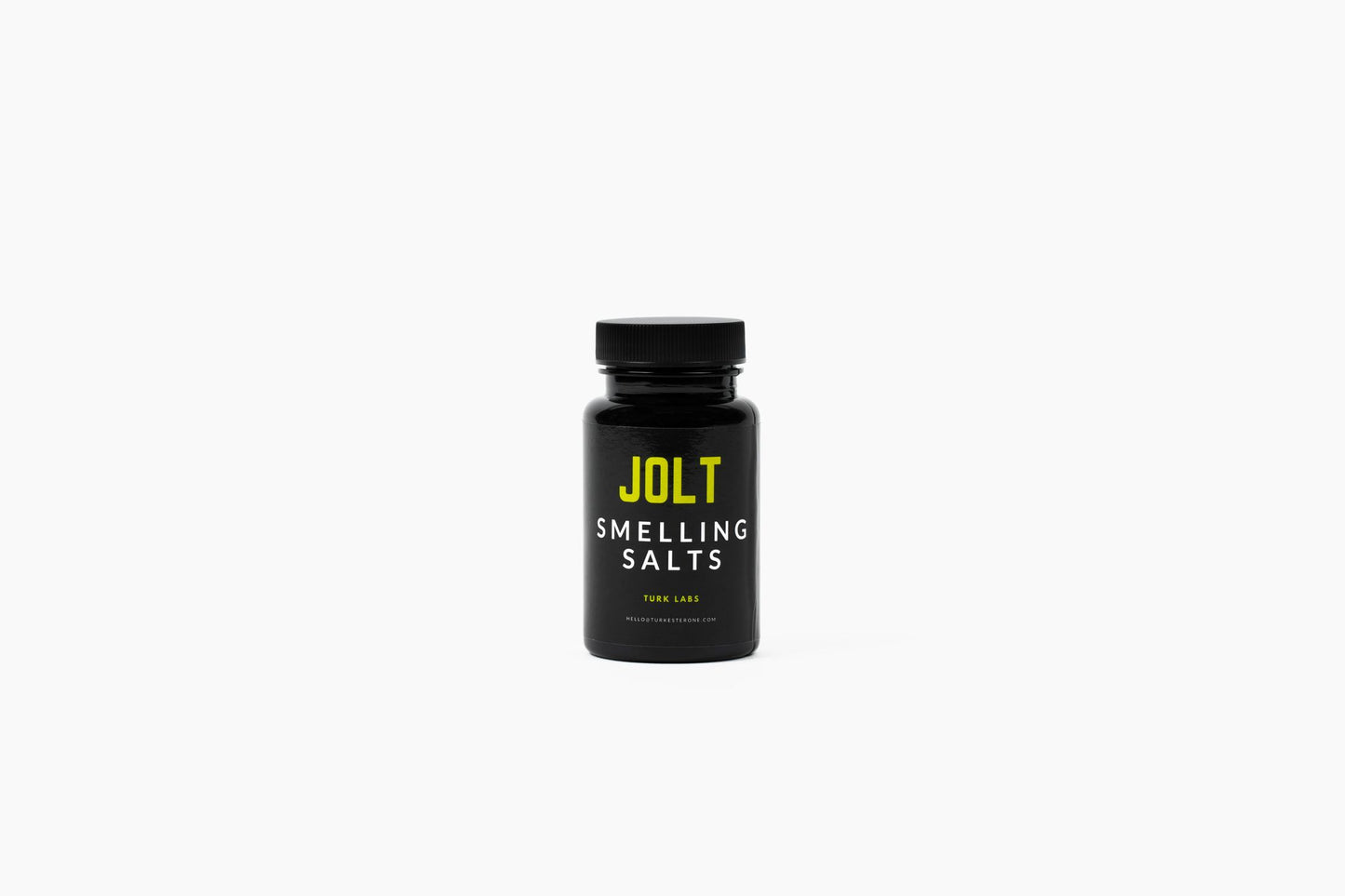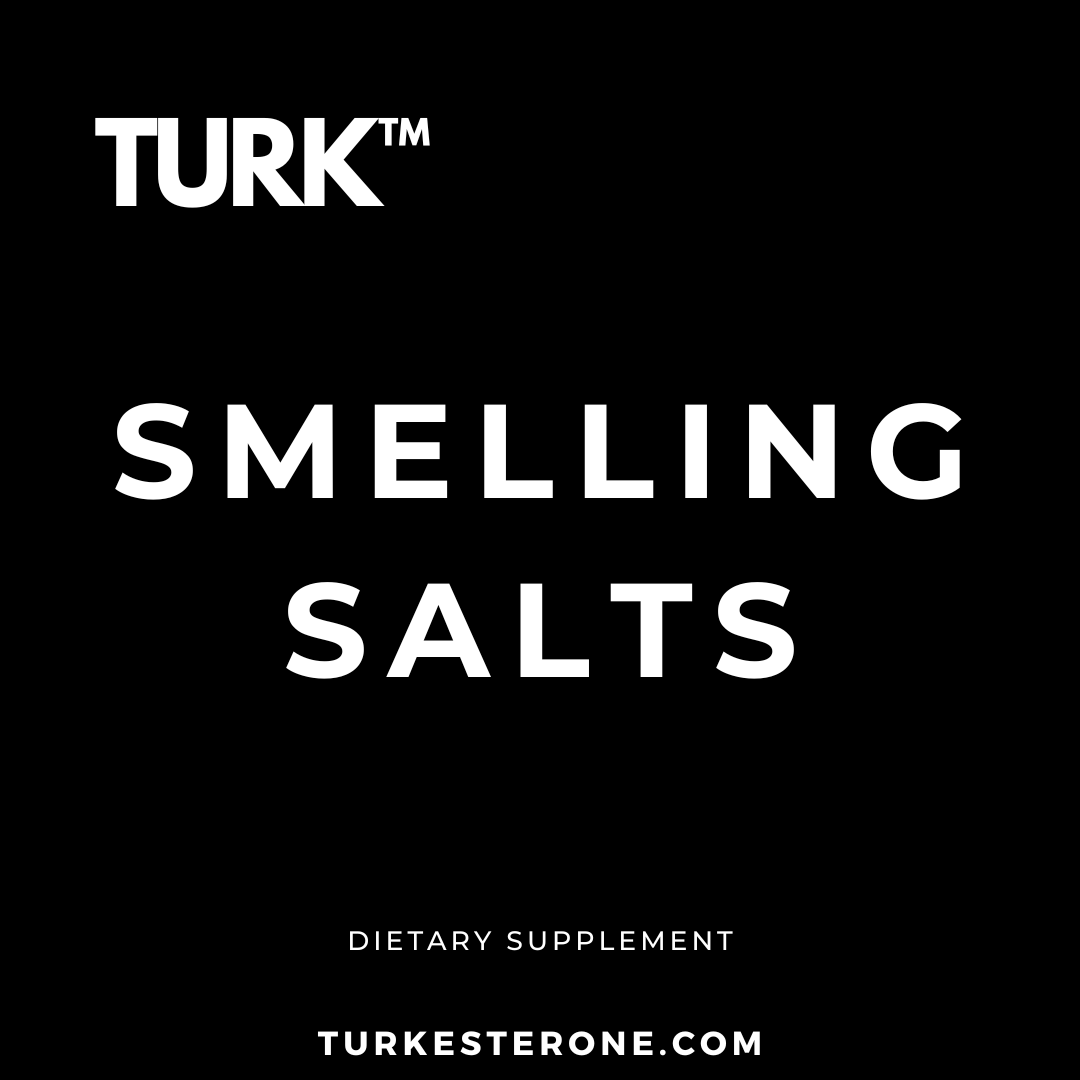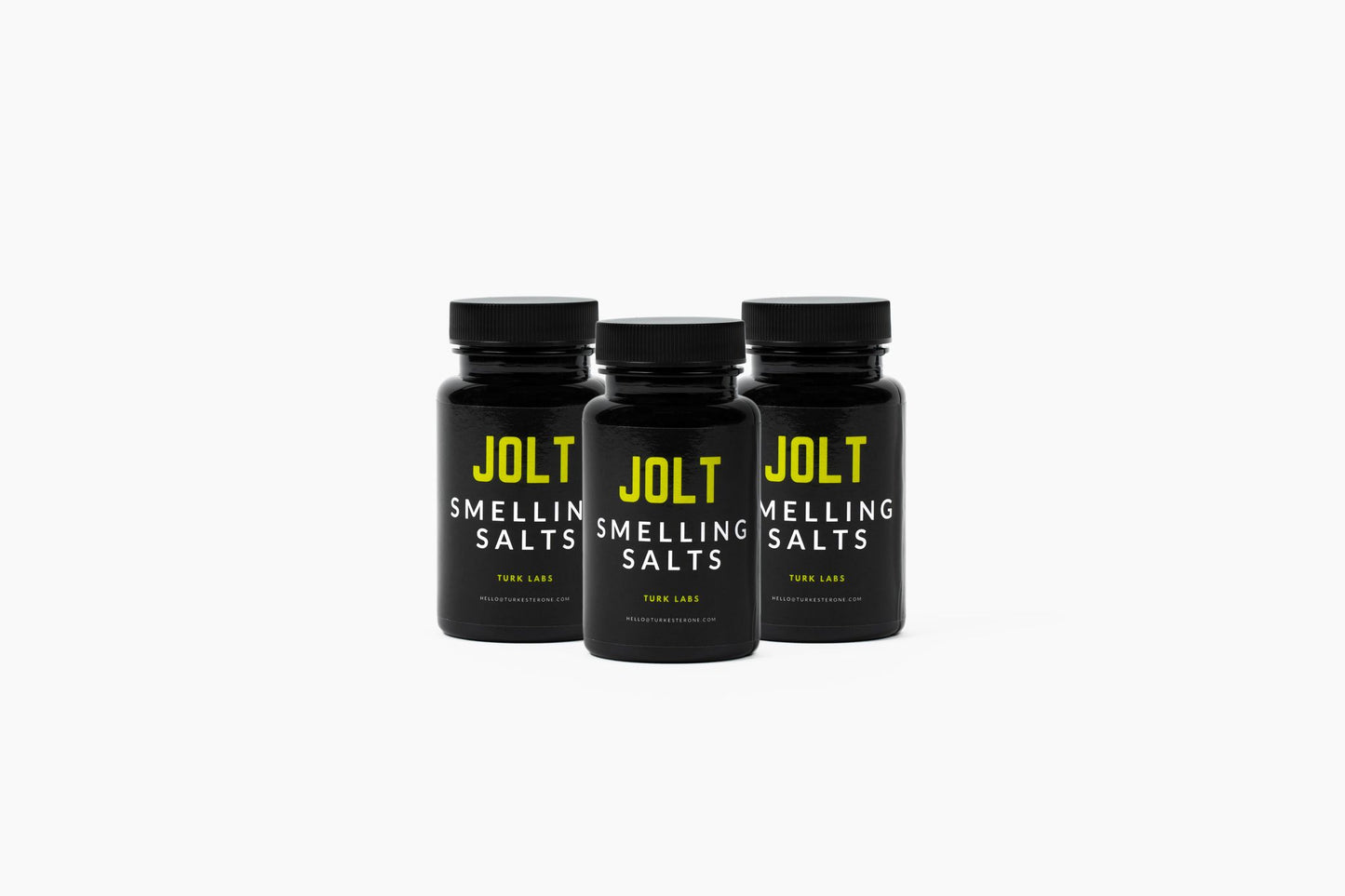TurkLabs
Smelling Salts
Smelling Salts
Couldn't load pickup availability
You've probably seen athletes snap a small packet under their nose and take a deep breath before a big play. What's that all about? They're using smelling salts, a centuries-old remedy that's making a modern comeback.
Smelling salts aren't your everyday table salt. They're a blend of ammonium carbonate known to jolt the senses and sharpen focus. But there's more to these nose-awakening compounds than meets the eye.
If you're thinking about smelling salts - here's what you need to know:
What are Smelling Salts?
Smelling salts, often considered a relic of Victorian-era medicine, pack quite a punch. Despite their name, they're usually not salts at all. In essence, they are a blend of ammonium carbonate and perfume sealed within a container. When someone breaks or opens the container, it releases ammonia gas that triggers an inhalation reflex by irritating the membranes of the nose and lungs.
This reaction to a sudden rush of ammonia gas is what may jolt the senses, typically resulting in an increased heart rate, blood pressure, and a temporary boost in energy and alertness. It's fascinating to note that smelling salts were initially used to help revive individuals who fainted or were unconscious.
As times have evolved, so has the usage of smelling salts. Today athletes across the globe use them to gear up for heavy lifts, or to clear the cobwebs after taking a hit on the field. However, it's not an across-the-board tactic. Some sports leagues and organizations discourage or even prohibit the use of smelling salts due to health concerns or due to it being seen as a performance enhancer.
There's an ongoing debate surrounding their safety and effectiveness. So, let's dive a little deeper into the mechanism of smelling salts, and unravel the reasons they are popular within certain sports circles.
Historical Use of Smelling Salts
Smelling salts have been in use far back in the annals of history. In the Roman Empire era, physicians recognized the power of ammonia and made use of smelling salts to revive patients. Fast forward to the Victorian age, ladies habitually used smelling salts as a fainting remedy. They'd sniff them to prevent swooning, which was an all too common symptom of wearing tight, uncomfortable corsets. Even today, these handy little ampoules make cameos in period dramas and films, effectively portraying their function in times past.
The 18th and 19th centuries witnessed a more prevalent use of smelling salts across different realms of society. You'd likely find them in various locations, from boxing rings to royal courts. They served as emergency revivers for boxers downed by heavy punches, and aristocrats used them to counter the ill effects of poorly ventilated, crowded spaces.
Moving into the 20th century, the use of smelling salts was not as widespread as in previous periods. With advancements in medical knowledge and technology, their prominence in society drastically scaled down. However, these little sniffables maintained a steady presence in the sports world. In the original version of football rules, dating back to 1863, there's an intriguing mandate that forbids the use of 'smelling salts' in the event of a player being 'knocked out'.
While it's apparent that the popularity of smelling salts has seen peaks and troughs over different periods, their usage has never truly disappeared. Sports professionals, theatrical performers, and several others continue to utilize them, even though their effectiveness and safety generate a significant amount of debate. As we delve deeper into this topic, we'll uncover how smelling salts work and the reasons behind their continued appeal in sports circles.
How to Use Smelling Salts
It's crucial to use smelling salts properly to ensure safety and effectiveness. Employing these potent stimulants is straightforward, but it's important to remember that they're not toys. They're powerful tools that can have significant effects when used improperly.
Typically, smelling salts come in a small container, often ampoules or bottles. To use, simply break open the ampoule or open the bottle and hold it under your nose. Do not put it directly into your nostrils. That's too close and can be quite harmful.
Once the container is open, take a small, quick whiff. You don't need to take a big, long sniff. These salts are powerful, and a tiny whiff is enough to get the job done. It's vital to use in moderation as overuse can cause negative effects like nasal irritation and nausea.
Always remember, smelling salts can be extremely potent, and they're intended for occasional use only. It's not a good idea to use them often or casually. They're designed to deliver a swift shock to your system to help wake you up or boost alertness. Despite their storied history and common usage in certain circles, they're not meant for everyday use.
Remember to always consult with a qualified healthcare professional before starting any new treatment or making any changes to existing treatment. Although smelling salts have enjoyed a long history of common use, their safety and effectiveness are still debated in the medical community. In the athletic space as well there are disagreements, with some arguing that while these might provide a temporary boost in performance, the longer-term health implications are not yet fully understood.
Who Uses Smelling Salts?
Smelling salts are no stranger to the sports industry. Both professional athletes and fitness enthusiasts dabble with these wake-up boosters in pursuit of an enhanced performance. Many athletes incorporate smelling salts into their routines, swearing by the jolt of energy they deliver, assisting in pushing past their physical limits.
You'd probably imagine that it's only the weightlifters or boxers that use them, right? But, let's clear that myth up. No, it's not just the powerlifters or boxers! Hockey and football players are known to use them too. They seek the sharp jolt of alertness smelling salts offer, useful during critical moments in games.
It's not just confined to the sporting world, either. Let's go further back, shall we? These salts have been around for centuries. Historically, they were used by the likes of medical professionals in situations where patients were required to regain consciousness quickly. Moreover, even in the late 19th and early 20th centuries, they were commonplace in the purses of Victorian ladies. Their purpose? To guard against sudden fainting spells often claimed to be prevalent during this epoch.
Today, their usage has seen diversifications. They're found in the tool belts of first responders, medical professionals, and even some military personnel. Their purpose is a common one – to revive individuals from fainting spells or shock.
|
Occupation |
Usage |
|---|---|
|
Athletes |
Boosting performance |
|
Medical Professionals |
Reviving from fainting, shock |
|
Military Personnel |
Waking up, revival from shock |
Caution When Using Smelling Salts
Smelling salts have a place in both the sports and medical worlds. But remember, they're not a magic potion. They can help you push past your limits or revive you from a faint. Yet, they're not without risks. Overuse can lead to nasal damage or dependence. Always consult with a healthcare professional before starting any new regimen. Smelling salts are a tool, not a cure-all. Use them wisely and they can be a beneficial part of your routine.
Frequently Asked Questions about Smelling Salts
Who are the main users of smelling salts?
Smelling salts are primarily used by professional athletes, fitness enthusiasts, medical professionals, and military personnel. Athletes and fitness enthusiasts use them to boost their performance and push past physical limits.
What is the role of smelling salts in medicine and military?
In both the medical and military fields, smelling salts are utilized to revive individuals from states of fainting or shock. These salts provide a swift and effective means of restoring consciousness.
What was the historical use of smelling salts?
Historically, smelling salts were a common tool used by medical professionals and Victorian ladies. They would use them to regain consciousness quickly in situations where fainting was a risk. This practice ensured an effective guard against fainting spells.









